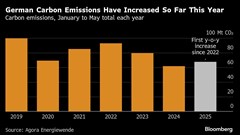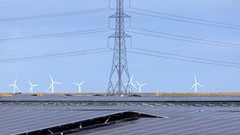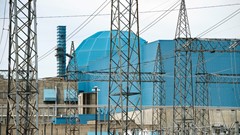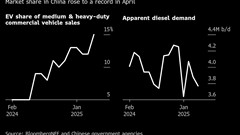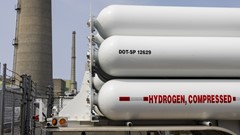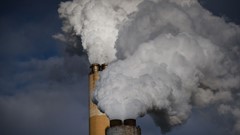GE Vernova Expects More Trouble for Struggling Offshore Wind Industry
Dec 12, 2024 by Bloomberg(Bloomberg) -- GE Vernova Inc., the maker of the biggest offshore wind turbines in the Western hemisphere, sees grim prospects for a beleaguered industry that’s facing slowing demand and weak pricing.
“The reality is, the economics of this industry don’t make sense,” Chief Executive Officer Scott Strazik said Wednesday in an interview at Bloomberg News headquarters in New York.
GE Vernova was spun off from General Electric Co. in April, becoming an independent supplier of power-generation equipment. The transaction came at a opportune moment, just as technology companies began clamoring for more electricity to run data centers. Sales of natural gas systems are surging, Strazik said, and the company’s shares have more than doubled this year.
Offshore wind, however, has been struggling. GE Vernova is no longer pursuing new sales of its massive offshore turbines, and the company hasn’t booked a single new sale for them in roughly three years, Strazik said.

Some of the issues stem from manufacturing and installation issues that struck both its US and UK operations. In July, a GE Vernova blade splintered and fell into the ocean at the Vineyard Wind I development south of Nantucket, Massachusetts. A month later, another blade failed during high wind conditions at the Dogger Bank farm off the English coast, the second blade incident this year at the site.
The company is taking a $700 million charge after other clients canceled contracts and aims to trim its offshore business, with about 900 jobs in the crosshairs.
“We’ve had a humbling six months,” Strazik said.
But the challenges aren’t limited to GE Vernova. Installing huge industrial systems at sea is difficult, making offshore wind projects expensive. Higher interest rates and supply-chain bottlenecks have further boosted expenses for developers. In the US, some projects have been canceled after costs climbed. And in Europe, Denmark’s largest-ever auction for offshore wind failed this month after no developers were willing to submit bids.
And while Maura Healey, the governor of GE Vernova’s home state of Massachusetts, has made offshore wind a cornerstone of her climate agenda, the US industry will soon have to contend with the return of President Donald Trump, who has been vocal in his dislike for offshore wind power.
All of this is going to crimp demand for the technology, said Paul Zimbardo, an analyst at Jefferies LLC.
“Offshore wind is very challenged,” he said in an interview. “It doesn’t have the same advantages of traditional renewables, which are cheap, but it has the same disadvantages because it’s intermittent.”
For developers to have economically viable margins, Strazik said offshore wind pricing should be more on par with new nuclear projects, which have historically been among the most costly sources of electricity. For example, auctions for offshore wind have failed at projects which would supply power at under $100 per megawatt-hour, Strazik said. Meanwhile, nuclear energy is priced at about $150 and more companies are looking to expand its use.
Comparing turbines installed at sea to solar panels or turbines built on land, which are some of the cheapest power sources, doesn’t lead to successful projects, Strazik said.
“We need to start with a clean whiteboard and think about it with a completely different view on price,” he said. “The pricing for offshore wind remains lower than it needs to be. We need the discussions on offshore wind to be more analogous to nuclear pricing and not even flirt with the pricing of onshore or solar.”
©2024 Bloomberg L.P.
By









